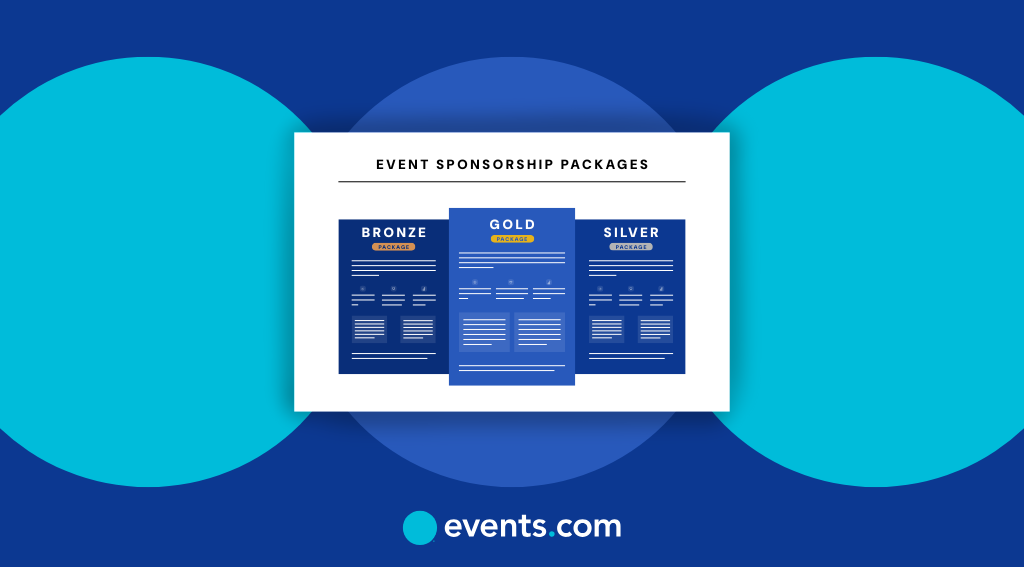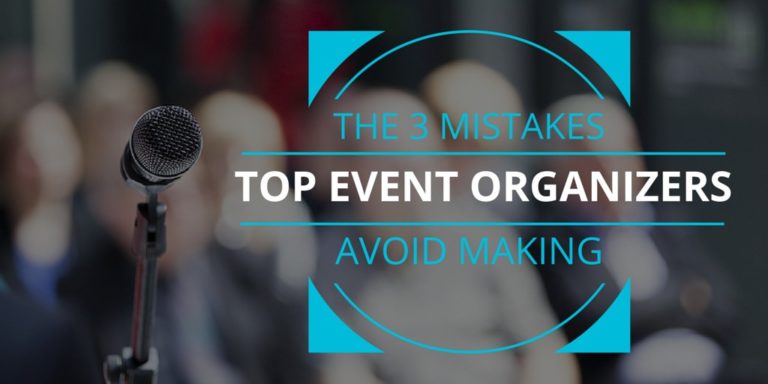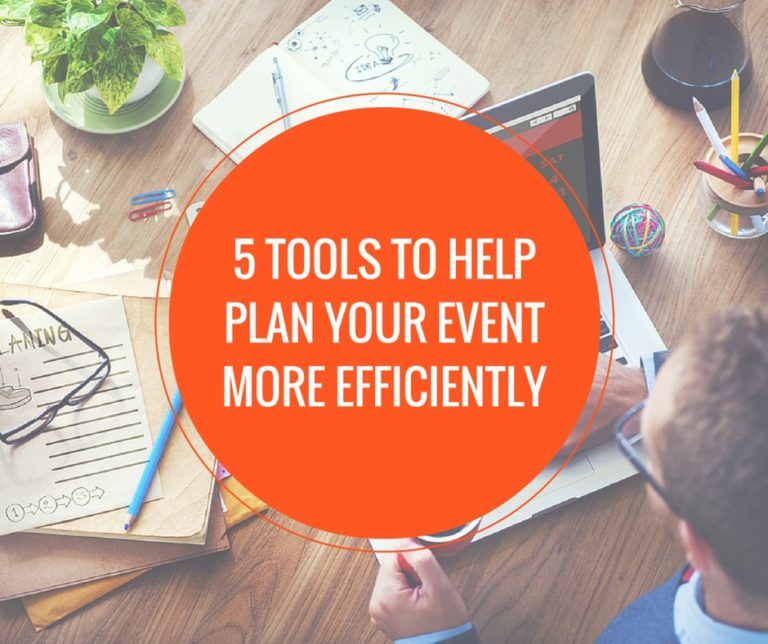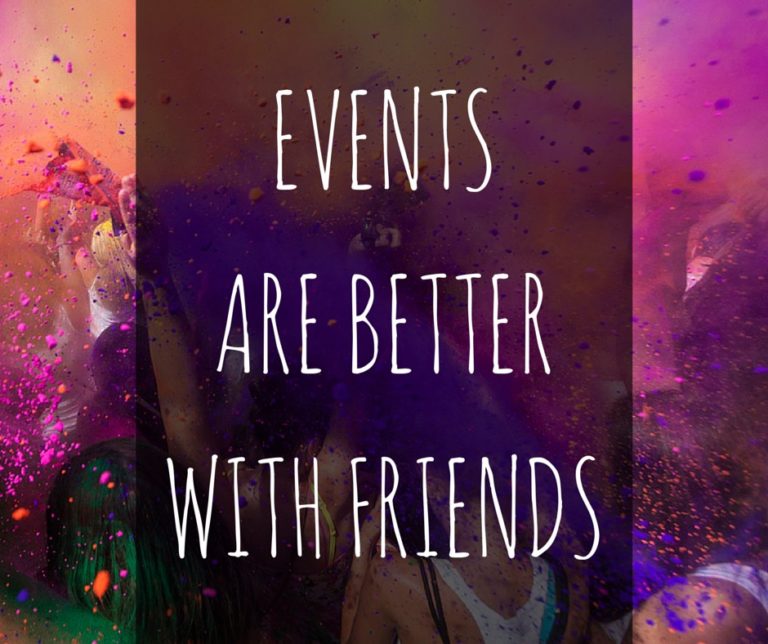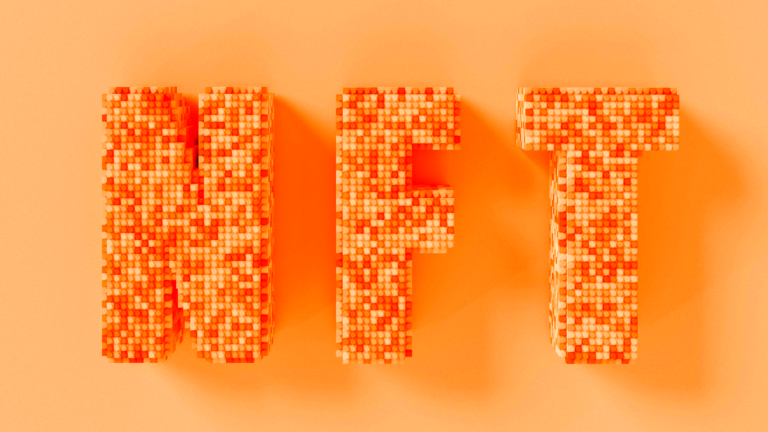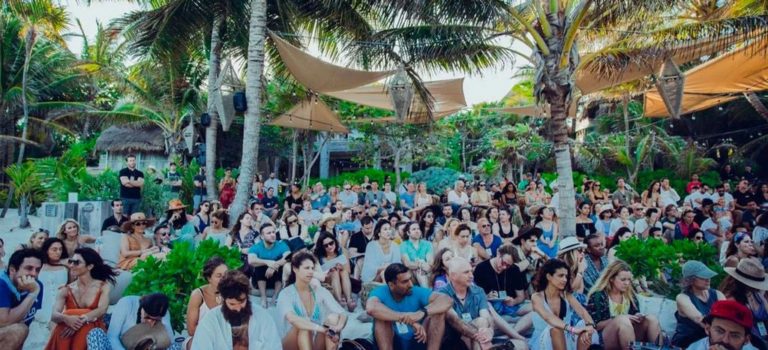Too many event sponsorship packages fall flat because they’re generic. A logo placed on a website, a name in a program, or vague promises of “exposure” don’t convince today’s brands. Sponsors want data: audience reach, demographic data, and clear ROI. Packages also fail when they offer unclear or don’t connect event sponsorship benefits to outcomes that matter to sponsors.
When done right, though, sponsorship changes everything. It boosts the event’s credibility, elevates the event attendee journey, and creates long-term partnerships that extend far beyond a single activation. For some events, sponsorships generate the majority of revenue, whereas for sponsors, it’s an opportunity to reach audiences they can’t access anywhere else.
This guide will show you how to build sponsorship packages that are impossible to ignore. We’ll break down the strategy behind irresistible offers, explore real-world examples from leading events and give you a blueprint you can adapt to your own stage.
Understand your goals and your audience
Sponsorships only work when your event objectives and a brand’s goals align. To get there, start with clarity on your own targets and a deep understanding of your sponsors.
Before building packages, define exactly what success looks like for your event.
Are you aiming to:
- break even
- grow attendance
- secure media coverage
- expand to new geographies?
Set SMART goals, Specific, Measurable, Achievable, Relevant, and Time-bound, and anchor your sponsorship structure to those outcomes.
Next, switch the focus. What are your target sponsors trying to achieve? For some, it’s lead capture or email acquisition. For others, it’s brand awareness, industry authority, or social impact. The more you tailor your offerings to their marketing objectives, the more irresistible they become.
It’s not just about alignment—it’s about efficiency. For example:
- A beverage brand may want in-person sampling stations.Â
- A fintech company might prefer speaking slots at your conference.Â
- A climate-conscious startup might only sponsor events with carbon offset initiatives.
Research is non-negotiable. Review sponsor activity at similar events. Analyze their press releases, social campaigns, or annual reports to understand their sponsorship philosophy. Look for patterns: What types of causes do they support? What activations have they invested in before?
At the intersection of your mission and theirs is where real value is created. Sponsors don’t just fund the event, but they’re partners as well. And like all partnerships, relevance and shared goals are the glue.
Choose the right sponsorship model
The structure of your event sponsorship packages sets the tone for every deal. A smart model creates clarity and momentum; a weak one makes even the best benefits hard to sell.Here are the types of event sponsorship packages:
1) Tiered sponsorship packages: Bronze/Silver/Gold tiers are familiar and remain the most common models or event sponsorship tiers because they’re easy to understand and scale, but they must be meaningful. These tiered packages should be strategically layered to reflect increasing levels of exclusivity, audience reach, and engagement.
What makes a strong tiered package:
- Bronze (Baseline Value): Logo visibility, social media mention, name in event guide. This tier covers the essentials but should still connect to measurable impressions (e.g., number of app views, on-site signage reach).
- Silver (Mid-Level Impact): Everything in Bronze + speaking opportunity or branded session, inclusion in email campaigns, and a physical/virtual booth.
- Gold (High-Touch Engagement): All lower-tier benefits + exclusive panel sponsorship, co-branded swag bags, access to VIP lounges, or data reporting post-event.
2) Customizable and À la carte packages: Not every sponsor fits neatly into a Bronze/Silver/Gold tier. Many want control over what they’re buying. That’s where customizable and à la carte packages shine as they allow sponsors to select benefits aligned with their goals and budget, creating a sense of ownership.
Examples of tailoring by KPI:
- Lead generation focused: QR code scans, attendee matchmaking, lead capture apps, or post-event contact lists (with consent).
- Brand awareness focused: High-visibility placements like app splash screens, stage branding, or venue signage.
- Thought leadership focused: Speaker slots, co-branded whitepapers, or hosted breakout sessions.
Popular Ă la carte options and creative sponsorship ideas include:
- Mobile app ads: Splash screens, banner ads, push notifications
- Content features: Sponsored blog posts, interviews, or pre/post-event email spotlights
- Digital real estate: Logo on a virtual platform login screen, interactive booth placement, leaderboard mentions
This modular approach gives sponsors freedom, while ensuring every activation maps back to tangible outcomes. Done right, it increases perceived value, boosts conversions, and strengthens long-term retention.
3) Exclusive sponsorships: Some sponsors want more than visibility. They want ownership. Exclusive sponsorships give them the prestige of being the only brand tied to a high-value moment, experience, or asset. Scarcity drives demand and elevates positioning, making these opportunities highly sought after.
Examples include:
- Innovation lounge partner: A tech sponsor curates a futuristic demo zone or networking hub.
- Wi-Fi sponsor: Their brand appears on every login screen and credential (“WiFi: SponsoredByTech | Password: 1234”).
- Opening keynote sponsor: Stage time, MC mention, and branding across keynote visuals.
Exclusivity multiplies perceived value by eliminating competition and embedding the sponsor directly into the attendee experience.
4) Hybrid sponsorship model: No single model fits every sponsor. That’s why many organizers adopt a hybrid approach: combining the structure of tiered packages, the flexibility of customizable add-ons, and the prestige of exclusives. This mix makes your event accessible to smaller sponsors while still offering premium opportunities for brands that want more. By blending models, you ensure every sponsor can find a package that aligns with their budget, objectives, and desired level of involvement.
Key components of a sponsorship package
A persuasive event sponsorship package is a carefully constructed narrative that aligns opportunity with outcome. Here’s what separates a generic deck from a persuasive, high-converting package:
- Cover Letter: Your cover letter is the handshake before the pitch. Keep it succinct but intentional: acknowledge the sponsor’s brand ethos, reference their current initiatives, and underscore the parallels between their goals and your audience. A well-crafted cover letter signals that it’s a thoughtful invitation to partner up.
- Event overview: Sponsors need context before they commit. Provide a clear snapshot of your event: date, venue, format, theme, and expected scale. But don’t stop there, articulate why the event matters. Is it a hub for industry leaders? A growing community? A trend-setting cultural platform? Framing the “why” elevates the overview from logistics to opportunity.
- Audience demographics: Numbers sell. Break down your attendee profile by age, professional role, industry sector, and geography. Include historical attendance numbers or engagement rates from past events. When sponsors can see the exact audience they’ll reach, and how it overlaps with their target market, the perceived value skyrockets.
- Tier details and benefits: Sponsors shouldn’t need a magnifying glass to understand what they’re buying. Lay out your tiers or à la carte options with precision. Show exactly what’s included at each level, how those benefits scale up, and how they connect to sponsor outcomes like impressions, leads, or conversions. The goal is simple: eliminate friction, maximize clarity.
- Visuals and testimonials: Use logos from past sponsors, pull quotes from testimonials, and visual proof points like charts or infographics. Showcase how previous partners benefited, whether it was brand visibility, leads generated, or media impact. This social proof establishes credibility while adding resonance: they show not just what you promise, but what you’ve already delivered.
- Call-to-Action: Every package should end with a clear next step. Whether it’s a meeting link, a QR code, or direct contact details, the call-to-action must be frictionless. The easier you make it for a sponsor to signal interest, the faster you move from pitch to partnership.
Managing all these elements can be time-consuming. With Events.com Sponsor, you can auto-generate proposals and agreements, track activity, and even pre-fill sponsor details, saving time while ensuring accuracy.
Pricing your event sponsorship packages
A sponsorship package is only as strong as the value it communicates, and that value is anchored in price. Pricing is a strategic decision. Set the bar too low, and you diminish your event’s credibility. Aim too high, and you risk alienating sponsors before the conversation even begins.
The key is to balance your organization’s revenue goals with market benchmarks and the perceived value you can deliver. Here’s how to structure pricing that works:
1) Base pricing: Start with clarity on your financial needs: how much sponsorship revenue must the event generate to meet its targets? Then benchmark against similar events in your industry and region. Sponsors often compare offers across multiple opportunities, so pricing that’s wildly out of sync can raise red flags.
But price shouldn’t just reflect cost recovery; it should reflect perceived value. If your event attracts senior decision-makers, global media coverage, or hard-to-reach demographics, your tiers can command higher rates.
2) Exclusivity premiums: Scarcity adds weight. When only one or two sponsors can secure top-tier visibility, whether that’s Platinum status, keynote naming rights, or an exclusive lounge, the value multiplies.
- Limiting high-tier slots not only drives demand but also positions those sponsors as elite partners rather than one of many.
- Be transparent about exclusivity. spell out how many slots exist at each level and the unique privileges attached. This clarity creates urgency and justifies the premium.
Pricing often trips up organizers, but with the built-in pricing tool of Events.com Sponsor, you can calculate industry-standard values automatically, based on participation and reach. You get data-backed pricing that feels fair to both you and your sponsors.
In pricing, the goal isn’t to be the cheapest option; it’s to be the clearest in demonstrating return on investment. By anchoring your tiers in financial logic, market relevance, and the scarcity effect, you present packages that feel both credible and compelling.
Designing a polished event sponsorship packet
Presentation matters not just for aesthetics but for credibility. A sponsorship packet is often the first tangible impression a brand has of your event. If it looks unprofessional, sloppy or inconsistent, sponsors may assume the same about your event execution.
A well-designed proposal signals that your event is organized, thoughtful, and worthy of investment. Following the best practices for creating sponsor proposals ensures your packet is polished, persuasive, and aligned with sponsor expectations. Here’s how to design one that stands out:
- Professional design: Your sponsorship package should look as professional as the partnerships you’re pursuing. Use platforms like Canva, Visme, or Adobe InDesign to create clean, modern layouts. Visual hierarchy, such as headlines, icons, whitespace, ensures information is easy to navigate. If you don’t have an in-house designer, outsourcing the design to a professional can be a worthwhile investment, strong presentation builds credibility before a single word is read.
- On-brand visuals: Sponsors expect coherence. Keep layouts consistent with your event branding: colors, fonts, imagery, and tone should mirror the event’s website, social channels, and attendee materials. Replace dense paragraphs with infographics, icons, and photography.
- Digital-friendly formats: These days, sponsors rarely print packets; they share them digitally. Build with that in mind. Add QR codes that link to videos or case studies, embed hyperlinks for instant access to registration or scheduling, and ensure the file is optimized for both desktop and mobile viewing.
By combining professional design, brand alignment, and digital interactivity, you create a sponsorship proposal that feels effortless to read, persuasive to share, and difficult to decline.
Select the most compelling benefits
Sponsors invest because they expect returns. The benefits you highlight must feel tangible, relevant, and tied directly to outcomes they value. Generic promises of “exposure” won’t hold attention. What matters is demonstrating how your event sponsorship packages translate into measurable ROI. Here’s how to organize them:
- Brand exposure: Logos remain relevant, but smart placement is what counts. Lanyards, stage transitions, and digital banners can work, but they must be positioned where attention is already high. Visibility without relevance is noise; visibility at moments of focus carries weight.
- Lead generation: Speaking slots, curated networking sessions, exhibitor booths, and digital lead capture tools all give sponsors a direct line to potential customers. Layer in QR code scans, matchmaking apps, or post-event reports (with consent) to make access measurable and repeatable.
- Digital visibility: From branded email campaigns to social media spotlights, digital visibility extends a sponsor’s reach before, during, and after the event. Digital assets extend exposure into the channels attendees use daily, multiplying impressions and amplifying sponsor reach.
- Virtual-specific benefits: For hybrid or fully virtual events, offer sponsorship of breakout sessions, branded polls, or virtual networking spaces. These kinds of hybrid or virtual event sponsorships provide immersive brand touchpoints without the limitations of physical space, giving sponsors meaningful visibility in digital environments.
- In-kind and non-monetary options: Partnerships aren’t always cash-based. Media coverage, merchandise support, and food and beverage partnerships reduce costs for organizers while still giving sponsors visibility. These can be particularly effective for smaller brands seeking entry-level partnerships.
Supporting materials to build trust
Even the most polished sponsorship package will miss the mark if it feels unproven. Sponsors are making an investment, and like any investor, they want assurance that their money will generate returns.
The most persuasive packages don’t just outline opportunities; they substantiate them with evidence. Here’s how to build that trust:
1) Use event data: ROI metrics are your strongest validation tool. Go beyond attendance figures and showcase measurable outcomes from past events: leads generated, impressions delivered, app engagement rates, or post-event survey feedback. If you can quantify sponsor ROI, you move the conversation from promises to proof.
2) Case studies and testimonials: Share short case studies of past sponsors that highlight their objectives, the activations they chose, and the outcomes they achieved. Layer in testimonials from sponsor representatives or even attendees who interacted with branded activations. These authentic voices carry weight, often more than any chart or metric.
3) Impact visuals: Even strong numbers lose impact if they’re buried in text. Use charts, infographics, or demographic heat maps to present data in a way that’s instantly digestible. Visuals also highlight scale, for example, showing audience demographics at a glance or mapping brand impressions across digital channels. A well-designed visual turns complex information into a clear advantage for your pitch.
By combining hard data, human stories, and compelling visuals, you create a sponsorship package that feels less like a sales deck and more like a trusted investment report, one that reassures sponsors they’re making the right choice.
Pitching and follow-up strategy
Success comes from how you pitch and present an event sponsorship package, and how you manage follow-ups. Sponsors receive dozens of partnership requests every year, so the way you approach them, when, how, and with what level of personalization, determines whether your package gets noticed or ignored. Knowing how to pitch an event to sponsors with clarity and relevance is the difference between getting overlooked and securing a strong partnership.
A smart outreach strategy respects the sponsor’s time, speaks to their priorities, and creates momentum toward a “yes.” Here’s how to structure your approach:
- Timeline for outreach: Most companies set sponsorship budgets well before the calendar year. To avoid missing the window, start outreach 6 to 11 months before your event. Early contact gives sponsors time to evaluate, align internally, and reserve funds. Waiting until the last minute forces you into a competitive scramble with other events.
- First contact: Your initial message should be short, warm, and sponsor-centric. Instead of leading with funding needs, highlight the opportunity: “We noticed your brand has been expanding into the B2B space. Our upcoming event attracts 2,000 decision-makers in that sector.” This creates intrigue without overwhelming them with details.
- Full package and CTA: Once interest is shown, send the detailed sponsorship package with a clear call-to-action. Spell out what comes next: a meeting link, a proposal deadline, or a simple “reply to confirm.” The easier it is to respond, the faster the deal moves forward.
- Personalized approach: Sponsors can tell when they’re one of many. Reference their recent campaigns, CSR commitments, or product launches and explain how your event connects. This level of personalization not only proves effort but also demonstrates alignment, turning your pitch from a cold ask into a relevant opportunity.
- Follow-up and negotiation: Not every sponsor will respond immediately. A structured follow-up approach, one week, three weeks, then a month later, shows persistence without being pushy. If negotiations begin, stay flexible but protect the integrity of your package. Adjust deliverables, not the overall value. A well-negotiated deal leaves both sides confident and committed.
After sponsorship: activation and retention
Securing a sponsor is only half the battle. The real measure of success is whether that sponsor comes back for your next event or, even better, signs on for multiple years. Understanding how to attract and retain long-term sponsors is the lifeblood of sustainable sponsorship strategy, because renewing a satisfied partner is far easier (and cheaper) than finding a new one.
To achieve this, you must practice what you preach and exceed expectations in demonstrating value. Here’s how to build long-term loyalty:
1) Deliver on promises: Credibility is everything. If you’ve promised stage mentions, social posts, or branded lounges, execute them flawlessly. Even small oversights, such as a missing logo on the event app, a forgotten mention in the opening remarks, can damage trust. A sponsor who feels shortchanged will rarely renew. Being meticulous about delivery is the baseline for retention.
One way to ensure promises don’t slip through the cracks is to use a structured system. Events.com Sponsor offers an activation calendar that automatically pulls deliverables from signed agreements, complete with deadlines and instructions for each. It keeps everyone aligned and helps you deliver efficiently, something sponsors always remember when it’s time to renew.
2) Creative post-event touchpoints: Create meaningful follow-ups with the sponsors. Consider:
- Sponsor highlight videos shared on social channels to publicly celebrate the partnership.
- Exclusive debrief sessions to review outcomes and gather feedback.
- Sneak peeks of next year’s plan to spark early interest in renewal.
These gestures signal that you view sponsors as long-term partners, not short-term funders, and they help demonstrate strong practices in how to build and manage relationships with event sponsors effectively.
3) Multi-year packages: For high-value sponsors, offer the option to commit across multiple years. Provide incentives like discounted rates, first pick of premium activations, or guaranteed exclusivity. Multi-year packages reduce uncertainty for you and create prestige for the sponsor, positioning them as a consistent partner in your event’s growth.
Retention isn’t about one big gesture; it’s about consistent, thoughtful execution. When sponsors feel valued, informed, and celebrated, they’re far more likely to return and bring larger budgets with them.
Benchmark with real-world examples of event sponsorship packages
The best way to refine your own event sponsorship packages is to study how others succeed. Leading events across industries show that effective packages share three qualities: clarity, alignment with sponsor goals, and measurable ROI. Here are two examples, one from the tech world, one from a global professional association, that illustrate these principles in action.
Case study: GitHub Universe Sponsorship
GitHub Universe is one of the world’s leading developer conferences, attracting software engineers, open-source contributors, and enterprise tech leaders. Their sponsorship packages are a clear example of how even a digital-first event can create structured, outcome-oriented opportunities for brands.
1) Community sponsorship – ~$10,000: This entry-level tier focuses on visibility and credibility. Sponsors receive logo placement on the GitHub Universe landing page, inclusion in the sponsor roster, and mentions in attendee communications. It’s designed as a simple, low-friction way for brands to connect with the GitHub ecosystem and establish awareness without needing heavy activation or large budgets.
2) Demo sponsorship – ~$20,000: This tier emphasizes engagement and lead generation. Sponsors receive a customizable virtual demo station with embedded video, branded descriptions, and custom CTAs (like Learn More or Try Now). The station remains active for 30 days post-event, extending exposure and sustaining lead capture beyond the live experience. With added logo placement in attendee communications, this package delivers interactive visibility and measurable ROI, proving the impact of digital-first sponsorships.
Why it matters: GitHub Universe shows how even minimal tiers can be effective when each aligns clearly to sponsor goals: one focused on awareness, the other on engagement.
Case study: AIJA Half-Year Conference (Dubai, 2021)
The International Association of Young Lawyers (AIJA) held its Half-Year November Conference in Dubai, attracting 250+ legal professionals from 35+ countries. Its sponsorship model demonstrates how mid-sized events can blend visibility, hospitality, and thought leadership into compelling offers.
1) Premier sponsorship – €6,500: This package gave sponsors exclusive ownership of a flagship social event like the Dubai Adventure Dinner. Benefits included on-stage recognition, a speaking slot, an exhibit table, and visibility across social media, conference bags, and the official website. It combined exclusivity, networking, and emotional brand moments into one high-impact tier.
2) Platinum sponsorship – €5,000: This tier positioned sponsors at the center of learning by attaching their brand to a Welcome Reception or Academic Track. It included logo visibility across sessions and materials, the option to contribute a speaker, complimentary registration, and branding in session spaces. Recognition extended across marketing and social media, making it a knowledge-driven package for brands seeking thought leadership and global credibility.
Why it matters: AIJA’s approach blends brand visibility, audience engagement, and content alignment. By tying packages to both social and academic tracks, it offers sponsors a choice between cultural association and intellectual positioning.
Key lessons from the two examples of event sponsorship package:
- GitHub Universe demonstrates the power of clarity and digital activation, even with just two tiers, the packages align neatly to awareness vs. engagement goals.
- AIJA Dubai highlights how professional associations can create value by combining exclusivity, thought leadership, and hospitality into premium sponsorship opportunities.
Together, these examples show that sponsorship packages work best when they are simple to understand, tailored to sponsor outcomes, and structured to deliver measurable impact.
Sealing the dealÂ
The best sponsorship packages are clear, creative, and built with purpose. They give sponsors real value and connect brands with the right audience. Sponsors aren’t just buying logos or airtime; they’re investing in experiences, stories, and relationships. Your job is to show them that your event is the stage where their brand belongs. When you do, sponsorship stops feeling like a transaction and becomes a long-term alliance.
And if you’re ready to put these strategies into practice, Events.com makes it effortless. Whether you’re planning in-person, virtual, or hybrid experiences, book a demo on Events.com and see how it provides the tools to design polished sponsorship packages, track results, and deliver on every promise. With the right platform, your sponsors feel valued, your event grows stronger, and everyone leaves with more than they expected.
Frequently asked questions about event sponsorship packages
1. What does an event sponsorship package include?
Typical packages offer brand visibility (logos, signage, digital), engagement (booths, speaking slots, branded experiences), and ROI tools (social posts, post-event reports).
2. Who will my brand reach through a sponsorship package?
Audience quality drives value. Strong events share demographics like attendee numbers, roles, industries, and regions. This helps sponsors confirm alignment with their target market.
3. How do I know if sponsoring a certain event is worth it compared to others?
Great packages stand out with exclusivity, engagement, and ROI proof. Unique touchpoints and post-event analytics show measurable value; not just logos. This mix of visibility plus data reassures sponsors that their investment is smart.
